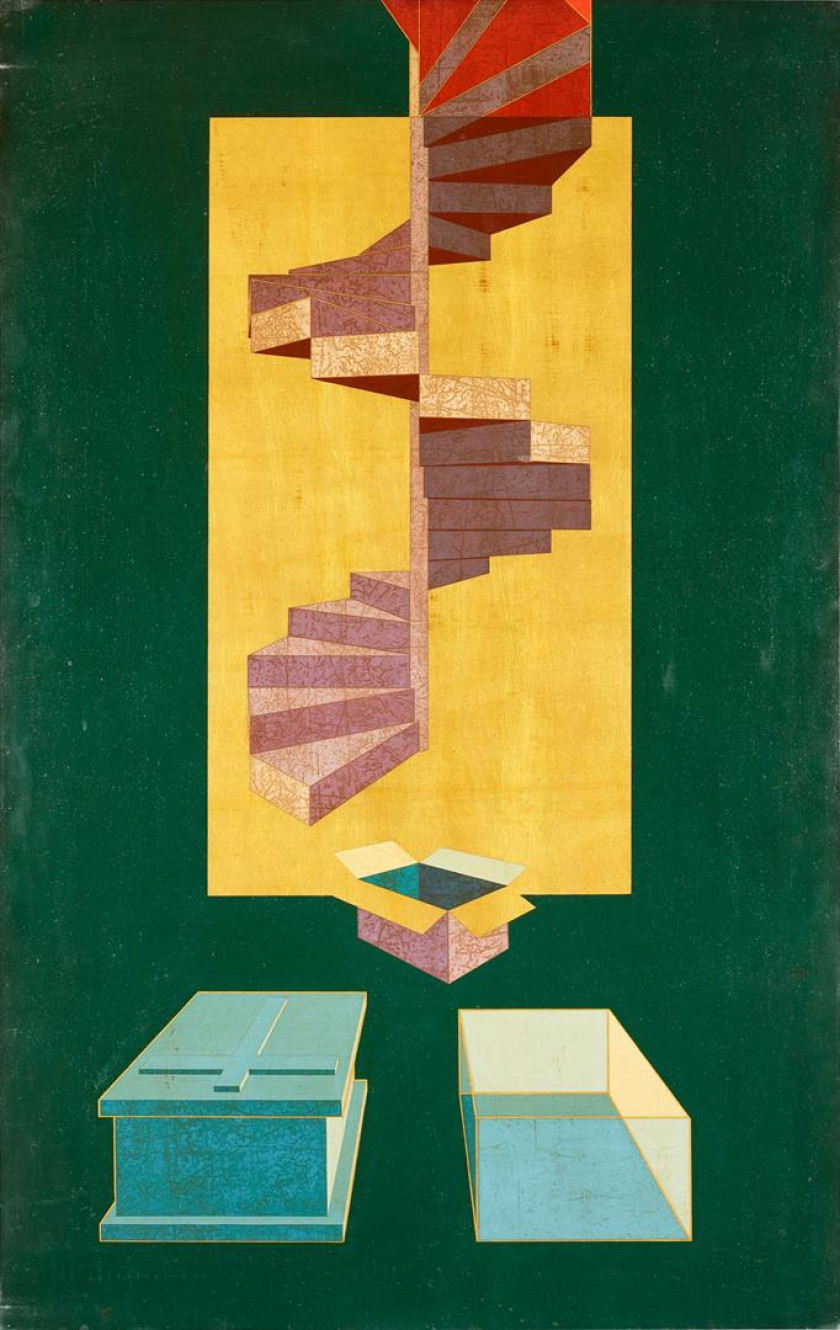Escada Mística II [Mystical Staircase II]
painting


1972
Vinyl paint and imitation gold on platex
110 x 70 cm
Eduardo Nery, one of the leading pioneers of op art in Portugal and largely responsible for its incorporation into public art and architecture, was a multifaceted artist who, throughout his career, worked on different styles and techniques using media such as tapestry, tiles, photography, collage and painting. Seemingly seeking to transcend the traditional boundaries of the pictorial image, the piece Mystical Staircase II is representative of a style of painting that is very much a part of Nery's work, known as "metaphysical painting", from the first half of the 1970s. There is, however, a strong connection to the grammars of op art through multiple and diversified articulations between components such as geometry, scale, and perspective, as well as the insightful use of colour, luminosity, transparencies, and opacities. The deconstruction of the coffin into a crate, a box, and an ascending staircase (which can also be read the other way around) mirrors Nery's search for the creation of new visual syntaxes, through the summoning of apparently disparate icons (coffin = finitude and immutability vs. stairs = continuity and movement), also demonstrating his wish to give shape to transcendental and infinite dimensions. In this double representation of the need to ascend and of the inevitability of the fall, the spiral staircase asserts itself as a synonym of the discontinuity of perception of reality; the front view symbolising the known, the tangible steps, the back view representing what we can only name in place of the absent opposite, the inaccessible steps. Mystical Staircase II is thus one of Nery's denser works regarding the connection between visual language, the geometric and chromatic composition of the elements, and the symbolic and metaphorical language of the universal forces and realities’ counterpoint.
Ana Fabíola Maurício